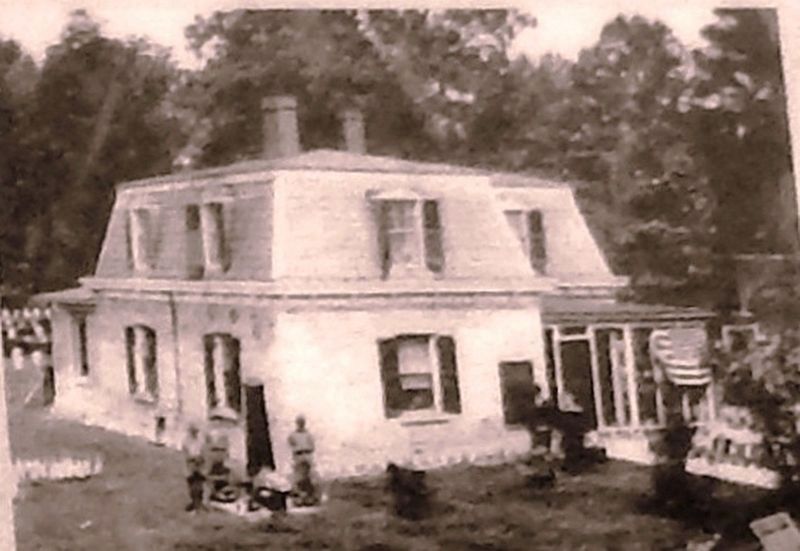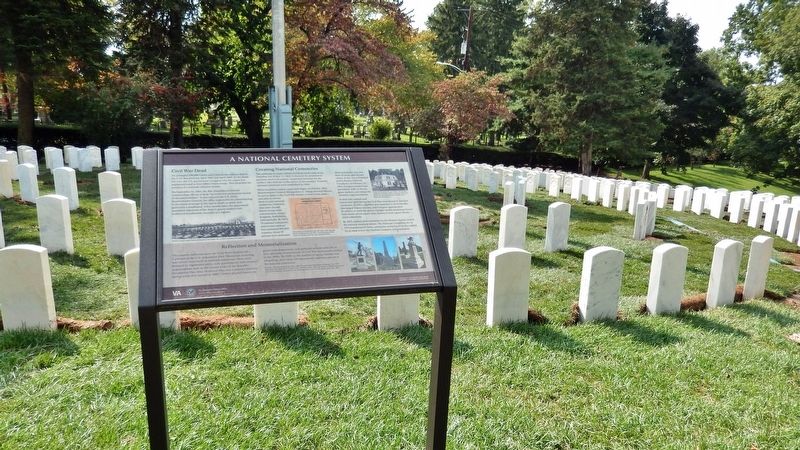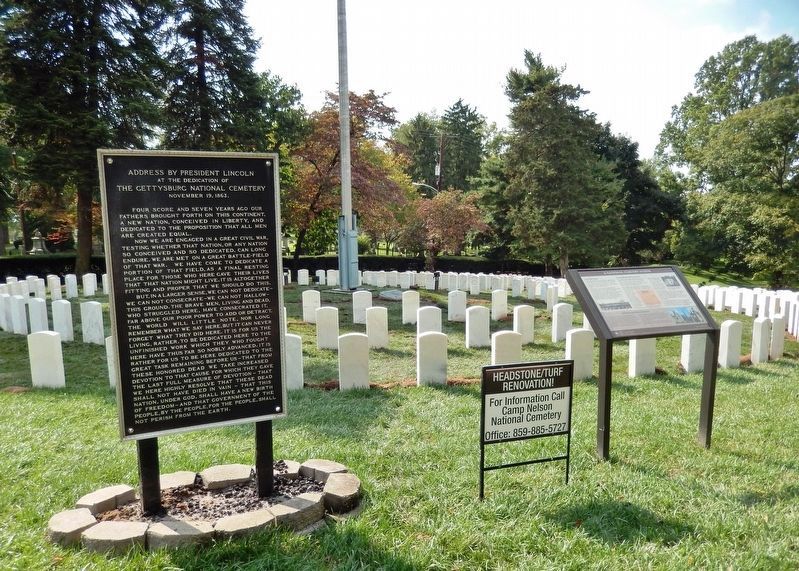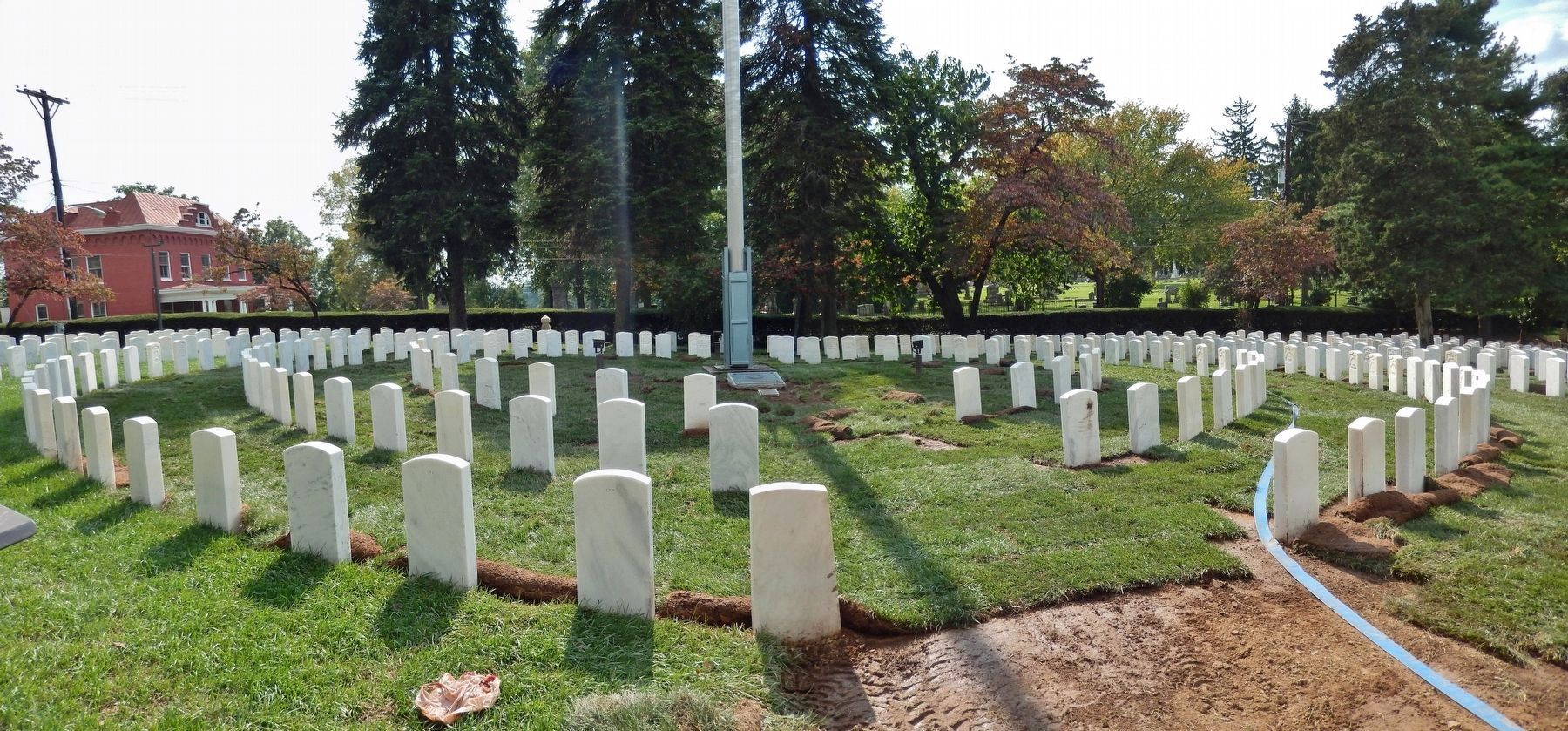Lexington in Fayette County, Kentucky — The American South (East South Central)
A National Cemetery System
Civil War Dead
An estimated 700,000 Union and Confederate soldiers died in the Civil War between April 1861 and April 1865. As the death toll rose, the U.S. government struggled with the urgent but unplanned need to bury fallen Union troops. This propelled the creation of a national cemetery system.
On September 11, 1861, the War Department directed commanding officers to keep "accurate and permanent records of deceased soldiers." It also required the U.S. Army Quartermaster General, the office responsible for administering to the need of troops in life and in death, to mark each grave with a headboard. A few months later, the department mandated interment of the dead in graves marked with numbered headboards, recorded in a register.
Creating National Cemeteries
The authority to create military burial grounds came in an Omnibus Act of July 17, 1862. It directed the president to purchase land to be used as "a national cemetery for the soldiers who shall die in the service of the country." Fourteen national cemeteries were established by 1862.
When hostilities ended, a grim task began. In October 1865, Quartermaster General Montgomery C. Meigs directed officers to survey lands in the Civil War theater to find Union dead and plan to reinter them in new national cemeteries. Cemetery sites were chosen where troops were concentrated: camps, hospitals, battlefields, railroad hubs. By 1872, 74 national cemeteries and several soldiers' lots contained 305,492 remains, about 45 percent were unknown.
Most cemeteries were less than 10 acres, and layouts varied. In the Act to Establish and to Protect National Cemeteries of February 22, 1867, Congress funded new permanent walls or fences, grave markers, and lodges for cemetery superintendents.
At first only soldiers and sailors who died during the Civil War were buried in national cemeteries. In 1873, eligibility was expanded to all honorably discharged Union veterans, and Congress appropriated $1 million to mark the graves. Upright marble headstones honor individuals whose names were known; 6-inch-square blocks mark unknowns.
By 1873, military post cemeteries on the Western frontier joined the national cemetery system. The National Cemeteries Act of 1973 transferred 82 Army cemeteries, including 12 of the original 14, to what is now the National Cemetery Administration.
Reflection and Memorialization
The country reflected upon the Civil War's human toll — 2 percent of the U.S. population died. Memorials honoring war service were built in national cemeteries. Most were donated by regimental units, state governments and veterans' organizations such as the Grand Army of the
Republic. Decoration Day, later Memorial Day, was a popular patriotic spring event that started in 1868. Visitors placed flowers on graves and monuments, and gathered around rostrums to hear speeches. Construction of Civil War monuments peaked in the 1890s. By 1920, as the number of aging veterans was dwindling, more than 120 monuments had been placed in the national cemeteries.
Topics and series. This historical marker is listed in these topic lists: Cemeteries & Burial Sites • War, US Civil. In addition, it is included in the National Cemeteries series list.
Location. 38° 3.474′ N, 84° 30.649′ W. Marker is in Lexington, Kentucky, in Fayette County. Marker can be reached from West Main Street (U.S. 421) 0.1 miles north of Newtown Pike / Oliver Lewis Highway (Kentucky Route 922), on the right when traveling north. Marker is located within the Lexington Cemetery, near the southwest side of the cemetery grounds. Touch for map. Marker is at or near this postal address: 833 West Main Street, Lexington KY 40508, United States of America. Touch for directions.
Other nearby markers. At least 8 other markers are within walking distance of this marker. Address by President Lincoln (here, next to this marker); Lexington National Cemetery (a few steps from this marker); Mary Desha
(about 600 feet away, measured in a direct line); 1787-1987 Bicentennial Tree (approx. 0.2 miles away); Confederate Soldiers Monument (approx. 0.2 miles away); Henry Clay (approx. 0.2 miles away); Lexington Cemetery (approx. 0.2 miles away); Ladies' Confederate Memorial (approx. ¼ mile away). Touch for a list and map of all markers in Lexington.
Also see . . .
1. The History of the U.S. National Cemetery System. Before the national cemeteries were developed, soldiers were buried where they fell, at military posts, or the body was sent back to the family for a private burial. In July of 1862, the Army’s Quartermaster Department was assigned the task of establishing and maintaining the national cemeteries. After the end of the Civil War in 1865, the program began in earnest – to search for, locate, recover, and identify the remains of all Union soldiers, before re-interment in a national cemetery. (Submitted on September 19, 2018, by Cosmos Mariner of Cape Canaveral, Florida.)
2. United States National Cemetery System. The United States National Cemetery System is a system of 147 nationally important cemeteries in the United States. A national cemetery is generally a military cemetery containing the graves of U.S.
military personnel, veterans and their spouses, but not exclusively so. The best known national cemetery is Arlington National Cemetery in Arlington County, Virginia, outside Washington, D.C.. Some national cemeteries, especially Arlington, contain the graves of important civilian leaders and other important national figures. Some national cemeteries also contain sections for Confederate soldiers. In addition to national cemeteries, there are also state veteran cemeteries. (Submitted on September 19, 2018, by Cosmos Mariner of Cape Canaveral, Florida.)
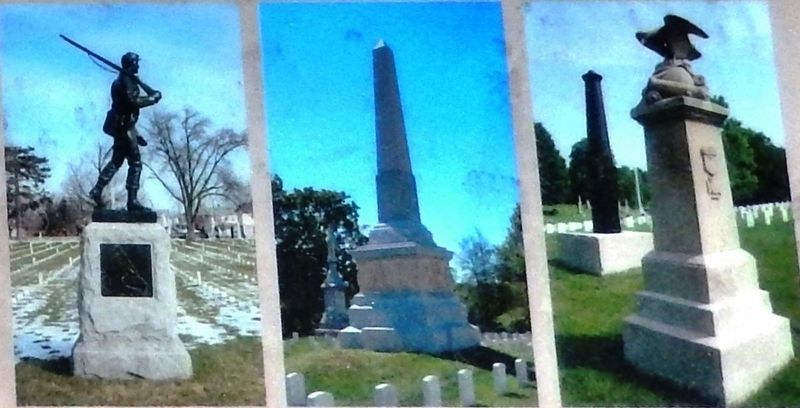
5. Marker detail: National Cemetery Monuments
left to right: Massachusetts Monument, Winchester, Va., 1907; Maryland Sons Monument, Loudon Park, Baltimore, Md., 1885; and Women's [sic - Woman's] Relief Corps/Grand Army of the Republic Monument to the Unknown Dead, Crown Hill, Indianapolis, Ind., 1889.
Credits. This page was last revised on February 24, 2020. It was originally submitted on September 19, 2018, by Cosmos Mariner of Cape Canaveral, Florida. This page has been viewed 263 times since then and 20 times this year. Photos: 1, 2, 3, 4, 5, 6. submitted on September 19, 2018, by Cosmos Mariner of Cape Canaveral, Florida. 7, 8. submitted on November 3, 2018, by Cosmos Mariner of Cape Canaveral, Florida. • Andrew Ruppenstein was the editor who published this page.
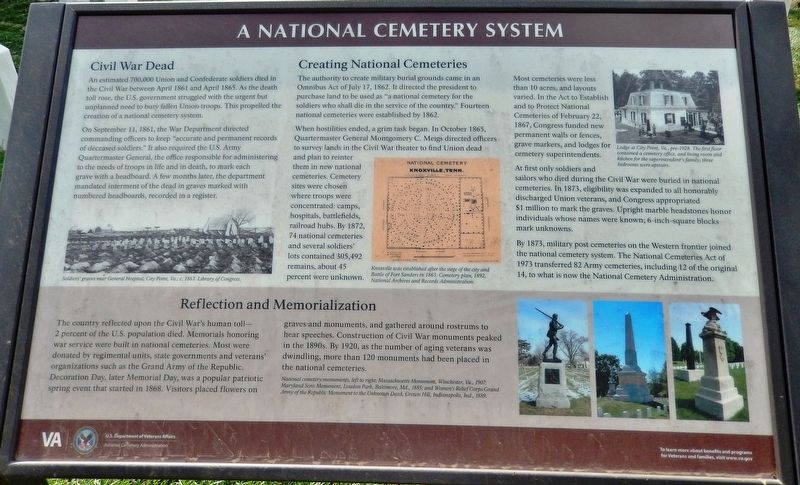
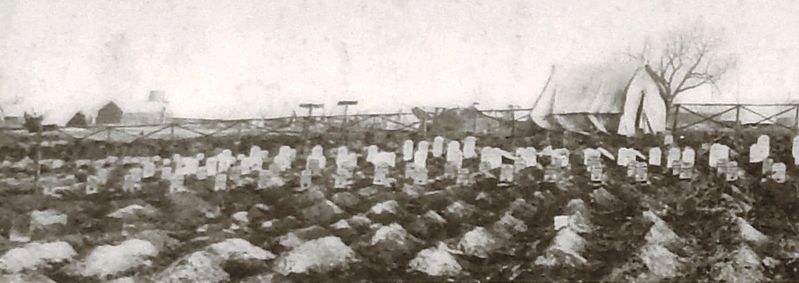
![Marker detail: Knoxville [National Cemetery] was established after the siege of the city and Battle. Click for full size. Marker detail: Knoxville [National Cemetery] was established after the siege of the city and Battle image. Click for full size.](Photos4/445/Photo445905.jpg?919201874300PM)
